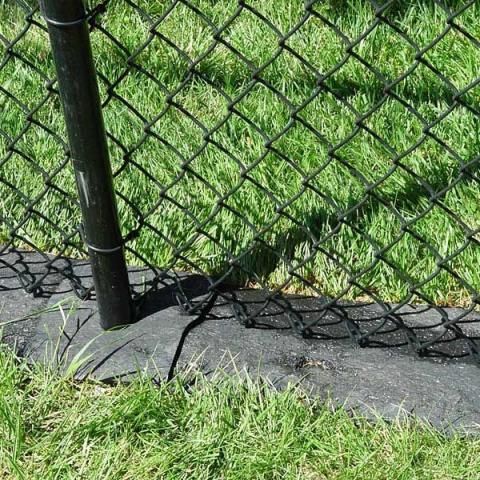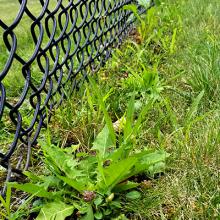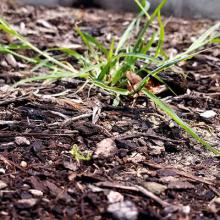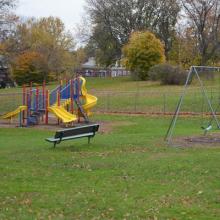
Mulch
Mulching is the application of material to soil to act as a surface covering. It is commonly used to suppress and hinder weeds primarily through light exclusion and physical obstruction. Mulch is most effective against annual weeds. Adequate mulching depth alone can provide good weed control. Mulch is generally split into two groups: organic and inorganic.
In addition to weed suppression, organic mulches provide several benefits including:
- Improving soil quality and structure after mulch decomposition
- Limiting soil erosion
- Reducing water loss
- Moderating soil temperature
- Providing winter protection
Note: Mulch can be a source of weed seeds and propagules. Avoid applying mulch contaminated with weed seeds, tubers, or nutlets. Source mulch from reputable vendors that offer weed-free mulch.
Avoid over-mulching
Applying too much mulch can damage trees, shrubs, and other landscape plants. Follow these tips to avoid plant damage due to over-mulching:
- Do not apply mulch directly against the base of woody plants. Avoid the mulch "volcano".
- Maintain a mulch free area around the base of woody plants: 3 to 5 inches around young plants and 8-18 inches around mature trees.
- Avoid covering root flares. If root flares are not visible, carefully remove mulch and soil directly adjacent to the tree.
Organic Mulches
Organic mulches consist of any naturally derived materials that decompose freely over time and are commonly industry byproducts. Common organic mulches include wood chips, bark, leaf mulch, and newspaper. Coarser materials generally provide better weed control by drying faster after irrigation events and excluding more light. For optimal results:
- Maintain a mulch layer of 2 to 4 inches.
- Reapply organic mulches every 2 to 3 years to compensate for settling due to decomposition.
Paper Mulches
Paper can be an effective barrier for weeds. In addition, it will breakdown over time and can be incorporated into the soil. Unlike other organic mulches, paper mulches are applied in sheets at a mulch shallower depth and covered with additional mulch.
When using paper mulches, apply two to four layers of newspaper to the soil and cover it with additional organic materials such as wood chips or leaf mulch. Moistening the newspaper during application can help prevent it from blowing away.
Inorganic Mulches
Inorganic mulches are mostly used as a barrier to weeds and composed of materials that do not readily decompose. As such, they need to be replenished much less frequently than organic mulches, but inorganic mulches do not add organic matter or improve soil quality over time.
Inorganic mulches tend to have fewer pest issues and are effective at shallower depths. They are often more expensive to source and install than organic mulches. Some materials, such as landscape fabric and black plastic, do not decompose and will remain in the environment indefinitely.
Landscape Fabric
Landscape fabric is commonly used in mulched environments, most often installed at the time of planting and mulch application. Compared to organic mulches, landscape fabric and other geotextiles are more expensive and time consuming to install especially when replacing old fabric. In addition, installing landscape fabric in existing plantings and landscapes is particularly difficult and involved.
Compared to mulches, landscape fabric has many disadvantages including:
- Effective for a relatively short period of time.
- Limited efficacy controlling perennial weeds.
- Difficult to weed once plants penetrate the fabric.
- New weeds can root into landscape fabric making weeding more difficult.
- Easily caught on tools.
Mow Strips
A mow strip is a type of lawn edging typically installed under fences or between two areas in a landscape such as turf and planting beds. Unlike other types of edging, mow strips lie flush with the ground. This allows a mower's blades and wheels to run over top of the edging which extends the equipment's reach and vastly reduces the need for trimming.
Mow strips impede weeds from growing under and directly adjacent to fences allowing for more even cutting of weeds. These barriers can be made of several materials including:
- Bricks
- Pavers
- Concrete
- Rubber
These materials vary in price, efficacy, and ease of installation. Mow strips can easily be installed to demarcate two areas in a landscape. Unfortunately, they can be more difficult to install under already established fencing. Some materials, such as rubber, can be more easily installed under a preexisting fence.




